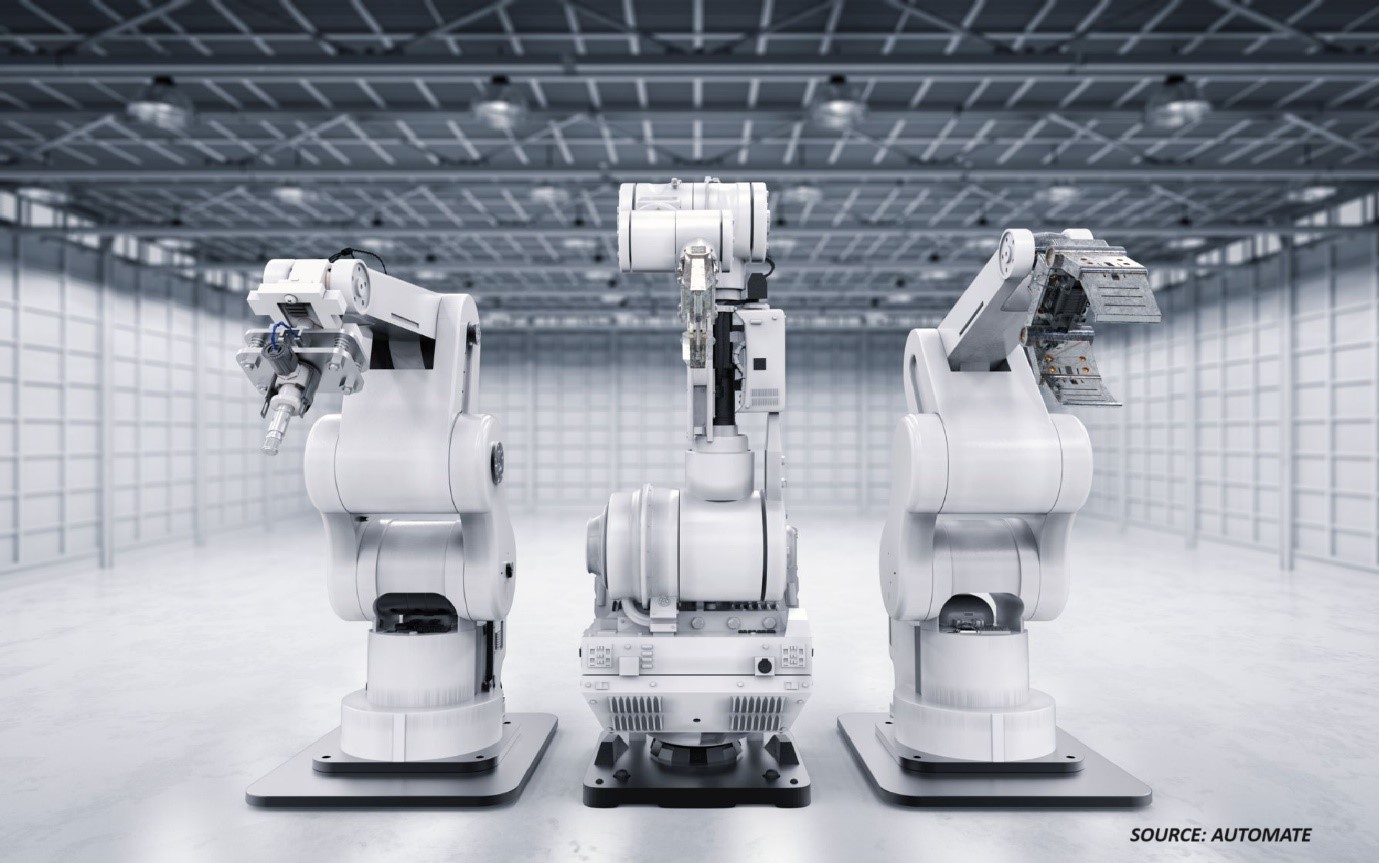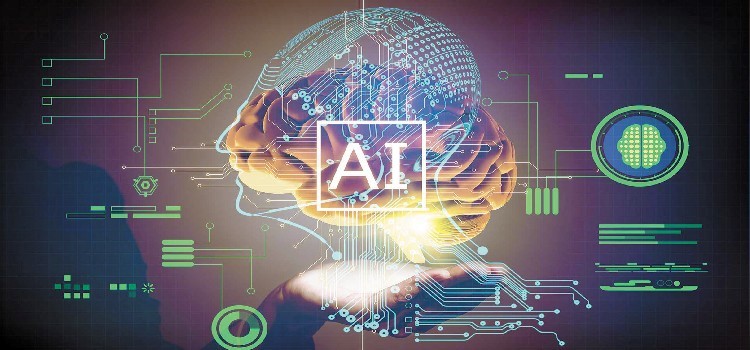
Artificial Intelligence (AI) Market by Component (Hardware, Software, and Services), Deployment (Cloud and On-Premise), Application (Virtual Assistants/Chatbots, Forecasts & Modeling, Text Analytics, Speech Analytics, Computer Vision, Predictive Maintenance, and Others), and End User Industry (BFSI, Government, Aerospace & Defense, Automotive, Healthcare IT & Telecom, Manufacturing, Education, Retail & E-commerce, Energy & Utilities, Media & Entertainment, and Others) – Global Opportunity Analysis and Industry Forecast, 2024–2030
Industry: ICT & Media | Publish Date: 04-Jun-2024 | No of Pages: 506 | No. of Tables: 392 | No. of Figures: 351 | Format: PDF | Report Code : N/A
Market Definition
The global Artificial Intelligence (AI) Market size was valued at USD 95.60 billion in 2021 and is predicted to reach USD 1,847.58 billion by 2030, registering a CAGR of 32.9% from 2022 to 2030.
AI is used to simulate human intelligence in machines or computer systems. The adoption of AI helps machines learn and gather problem-solving skills, understand human language, and recognize to analyze the collected data. AI can combine large data sets with processing algorithms such as machine learning (ML) and deep learning (DL) to learn from patterns and make rational decisions. AI is widely adopted across various industry verticals to improve efficiency, productivity, & quality of service and reduce human errors.
Adoption of Deep Learning and Neural Networks Accelerates Growth
Deep learning is a form of machine learning and AI that mimics how humans acquire certain types of knowledge. Neural networks are used in deep learning to tackle various issues, from simple categorization tasks to more challenging ones like speech and image recognition. Most of the advanced automation in enterprise AI platforms is attributed to the growth and adoption of machine learning and deep learning.
The most common application of deep learning is in the ability of computers to distinguish different objects depicted in pictures. There are numerous uses for deep learning based on computer vision, ranging from simple ones like identifying logos on social media to more complex ones like diagnosing diseases in medical images. In addition, deep learning is widely used in fraud detection. It is also possible to uncover seemingly undetectable signs of fraud using multi-layered neural network structures, allowing large datasets to be searched for intricate relationships. Therefore, neural networks are used to verify transactions in healthcare, eCommerce, financial services, and other industries, detect fraudulent or duplicate insurance claims, and catch theft, among other things.
High Adoption of AI Technology in Healthcare Stimulates the Market
Healthcare is steadily adopting AI technologies widely used in modern businesses and daily life. Artificial intelligence has significant potential to help healthcare providers in patient care and surgical procedures, enabling them to build on existing solutions and overcome problems faster. Most AI and healthcare technologies are highly relevant to the healthcare industry; however, the application areas could vary significantly between hospitals and other healthcare organizations.
Machine learning is one of the most prominent AI technologies used in healthcare due to its use in precision medicine. Moreover, AI-assisted diagnosis and treatment of diseases have taken center stage in healthcare for the past few decades. Furthermore, AI in healthcare can be utilized for various applications, including clinical documentation, Claims processing, revenue cycle management, and medical data management.
Lack of Standardization and Limited Skilled Workforce Hinders Growth.
Deeper knowledge of current AI technologies, their potential, and their limitations are necessary for any business management to implement AI successfully. The dearth of technical employees with appropriate experience and training to efficiently deploy and operate AI solutions is a major barrier to its adoption. A successful AI solution requires both technical expertise and business acumen, although they are often viewed as opposed to each other.
Most CEOs and managers lack the technical expertise required for AI adoption, and many data scientists are not very interested in the practical applications of their models. There are extremely few AI experts who are capable of utilizing technology to address a specific business issue. These factors are expected to hamper the AI market growth.
Rising Demand for Smart Robotics Promotes Vital Opportunities for The Market
With the incorporation of artificial intelligence into robotics, robots can perform repetitive tasks efficiently and without the need for human intervention. Robots can communicate with other robots as well as with people. Several tech companies and manufacturing units are implementing smart robots due to their high efficiency and low labor cost, making them increasingly popular. In addition, robots with AI built-in are anticipated to be adopted by businesses in specialized industries that require high ability, which in turn is expected to create significant future opportunities for the AI market.
North America Holds The Predominant Share of The Global AI Market
North America holds the lion’s share of the AI market and is expected to continue its dominance during the forecast period. This is attributed to the factors such as high healthcare expenditure in this region that enables healthcare providers to adopt advanced technologies such as artificial intelligence in various medical applications, including AI-assisted robotic surgeries, medical imaging analysis, and predictive analytics.
For instance, in December 2021, CVS Health announced a collaboration with Microsoft Corporation in the U.S. Through this collaboration, CVS intends to accelerate its digital health transformation using Microsoft’s expertise in artificial intelligence (AI) and cloud computing. Moreover, key market players, such as Alphabet Inc., Nvidia Corporation, Intel Corporation, and Amazon Inc., have adopted various strategies to expand their businesses and drive the market. For instance, in March 2022, Nvidia launched an AI computing platform for medical devices, Clara Holoscan MGX. This platform is specifically designed to meet the required regulatory standards for developing and deploying real-time AI applications.
Europe Region Witnesses Substantial Growth in The Global AI Market
On the other hand, Europe shows steady growth in the artificial intelligence market report owing to the tremendous applications of AI in the industrial sector and industries like healthcare, transportation, and automotive. Moreover, this region provides tremendous potential for the development of AI due to its advanced economy and substantial investment. Moreover, increased use of cloud-based services, apps, and connected devices such as smartphones & smart appliances and high demand for intelligent virtual assistants drive the AI industry in this region. Furthermore, the increasing demand for automated services in several large corporate giants improves the quality of software integrated into their work systems.
In addition, the expansion of the European AI market is being fueled by companies like SAP SE., Google LLC, IBM Corp., Microsoft Corp., and others. Moreover, industry players are using various strategies, such as new product launches, acquisitions, partnerships with the government, investment for start-ups, and technical developments, to remain competitive in the market. For instance, in July 2022, SAP SE announced the acquisition of a search-driven analytics firm, Askdata. This acquisition helped German multinational companies to provide better-informed decisions by leveraging AI-driven natural language searches.
Competitive Landscape
The key players operating in the global AI industry include IBM, Google, Microsoft Corporation, NVIDIA Corporation, Intel Corporation, AWS, Oracle Corporation, SAP SE, Apple Inc., and Salesforce. These players are launching numerous products across various regions to maintain their dominance in the market. For instance, in May 2022, Google launched two new AI solutions: Manufacturing Data Engine and Manufacturing Connect.
These solutions will help manufacturers to process and standardize data for analytics & insights, predictive maintenance, and machine-level anomaly detection. Moreover, in March 2022, Microsoft announced the general availability of Azure Health Data Services and updates to Microsoft Cloud for Healthcare. Azure is an AI-based cloud computing service operated by Microsoft for application management.
Artificial Intelligence (AI) Market Key Segments
By Component
-
Hardware
-
AI Accelerators
-
Memory Units
-
Sensors
-
Storage Devices
-
-
Software
-
AI Platforms
-
ML Tools
-
NLP Tools
-
Others
-
-
Services
-
Professional
-
System Integration & Deployment
-
AI Technology Consulting
-
Support & Maintenance
-
-
Managed
-
By Deployment
-
On-Premise
-
Cloud
By Application
-
Virtual Assistants/Chatbots
-
Forecasts & Modelling
-
Text Analytics
-
Speech Analytics
-
Computer Vision
-
Predictive Maintenance
-
Others
By End-User Industry
-
BFSI
-
Government
-
Aerospace and Defense
-
Automotive
-
Healthcare
-
Robot-Assisted Surgery
-
Virtual Nursing Assistants
-
Hospital Workflow Management
-
Dosage Error Reduction
-
Clinical Trial Participant Identifier
-
Preliminary Diagnosis
-
Automated Image Diagnosis
-
Others
-
-
IT & Telecom
-
Manufacturing
-
Education
-
Retail & E-commerce
-
Energy & Utilities
-
Media & Entertainment
-
Others
By Geography
-
North America
-
U.S.
-
Canada
-
Mexico
-
-
Europe
-
U.K.
-
Germany
-
France
-
Italy
-
Spain
-
Denmark
-
Finland
-
Netherlands
-
Norway
-
Russia
-
Sweden
-
Rest of Europe
-
-
Asia-Pacific
-
China
-
Japan
-
India
-
Australia
-
South Korea
-
Thailand
-
Singapore
-
Rest of Asia-Pacific
-
-
RoW
-
Latin America
-
Middle East
-
Africa
-
REPORT SCOPE AND SEGMENTATION:
|
Parameters |
Details |
|
Analysis Period |
2021–2030 |
|
Base Year Considered |
2021 |
|
Forecast Period |
2022–2030 |
|
Market Size Estimation |
Billion (USD) |
|
Market Segmentation |
By Component (Hardware, Software, Services) By Deployemnt (On-Premise, Cloud) By Application (Virtual Assistants/Chatbots, Forecasts & Modelling, Text Analytics, Speech Analytics, Computer Vision, Predictive Maintenance, Others) By End-User Industry (BFSI, Government, Aerospace and Defense, Automotive, Healthcare, IT & Telecom, Manufacturing, Education, Retail & E-commerce, Energy & Utilities, Media & Entertainment, Others) |
|
Geographical Segmentation |
North America (U.S., Canada, Mexico) Europe (UK, Germany, France, Spain, Italy, Netherlands, Denmark, Finland, Norway, Sweden, Russia, Rest of Europe), Asia-Pacific (China, Japan, Australia, India, South Korea, Thailand, Singapore, Rest of Asia-Pacific) Rest of World (Latin America, Middle East, Africa) |
|
Companies Profiled |
IBM, Google, Microsoft Corporation, NVIDIA Corporation, Intel Corporation, AWS, Oracle Corporation, SAP SE, Apple Inc., Salesforce |
KEY PLAYERS
-
IBM
-
Google
-
Microsoft Corporation
-
NVIDIA Corporation
-
Intel Corporation
-
AWS
-
Oracle Corporation
-
SAP SE
-
Apple Inc.
-
Salesforce




 Speak to Our Analyst
Speak to Our Analyst


































